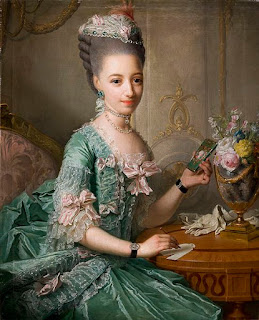At Dunfermline Palace in Fife a young girl was born on August 19th. 1596.
She received the name Elizabeth Stuart.
Elizabeth Stuart - Source picture: Wikipedia
Her parents were James V of Scotland (who also became James I of England)
and Anne of Denmark.
Elizabeth received the proper education for a princess. She learned not only
several languages like French and Latin but the princess also knew something
about history, geography, theology, writing, music and dancing.
As daughter of a reigning monarch, the young Elizabeth was seen as very
desirable. Many suitors wanted to marry her inter alia:
Gustavus Adolphus of Sweden;
Frederic Ulric, Duke of Brunswick-Wolfenbuttel;
Prince Maurice of Nassau;
Henry Howard, 1st. Earl of Northampton;
Otto, Hereditary Prince of Hesse;
Victor Amadeus, Prince of Piedmont.
Finally Frederick V, Count Palatine of the Rhine was chosen. He had a
great lineage, was a second Prince of the Empire and a staunch defender of
the Protestant faith. The match seemed to please them both from the beginning.
The wedding took place on February 14th. 1613 at the Royal Chapel of the
Westminster Palace. The marriage stayed a popular match and it was celebrated
with lavish festivities.
After two months the new couple traveled to the Royal Court in Heidelberg
(Germany). Frederick V gave her a new wing in Heidelberg Castle and many
more. They could have it all but Elizabeth's mother-in-law didn't like to share
her power with her son's wife. This caused a lot of trouble. However the
Royal Couple had 13 children together.
In 1619 Frederick was offered the throne of Bohemia. Elizabeth's husband
persuaded and accepted the doubtful task. The family moved to Prague.
Frederick was crowned there on November 4th. 1619. Elizabeth's coronation
as Queen of Bohemia took place 3 days later. These events were not supported
by the House of Habsburg.
On November 8th. 1620 Ferdinand, Holy Roman Emperor defeated Frederick
in the Battle of White Mountain. Frederick and Elizabeth had to leave Bohemia.
There they were remembered as Winter King and Queen.
Their own court in Heidelberg was occupied and an invitation of
the Prince of Orange brougth the family to the Hague (in The Netherlands).
Her husband went to the battlefield this time in Sweden, but
he never returned. He died on November 29th. 1632. When Elizabeth heard
the news, she had a big grief. She did not drink, eat or sleep for three days.
Then Charles I,the new King, invited her to return to England but she refused.
She wanted to fight for the rights of her children. Elizabeth's new aim
was trying to find some good matches for her sons and daughters.
In 1661 Elizabeth finally wanted to visit her native land. There she received a
small but impressive household. In 1662 Elizabeth was unwell she suffered
pneumonia. Elizabeth Stuart, Queen of Bohemia died on February 13th. 1662
in London.
Her grandson became King George I of England, even Queen Elizabeth II of
the United Kingdom is a descendant from her.



























